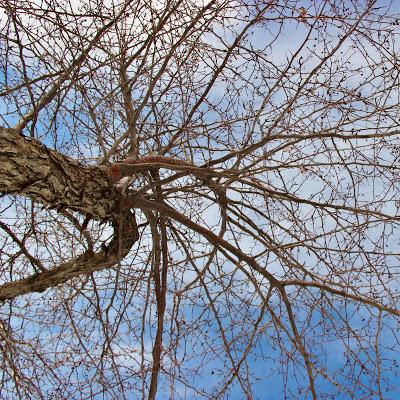
January 2019 has arrived, and we tree-followers are faced with an important decision: What tree to follow? In years past, I’ve chosen a birch in my yard (convenient), a limber pine in the mountains east of town (spectacular habitat but immutable tree, and inaccessible in winter), a large cottonwood along the Laramie River (plenty of action and entertaining history), a willow in the foothills east of town (fascinating tree, pleasant hike), a juneberry at a plains lake south of town (inconvenient in winter), a fossilized extinct palm tree that grew 300 miles away (failed in two attempts to visit the site due to snowstorms), and last year a scrappy little boxelder next to a warehouse just a block from my house. The boxelder and the willow are my favorites so far.
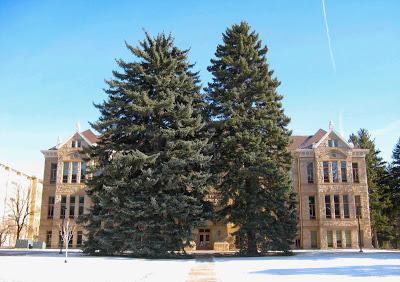
Old Main, the beginning of the University of Wyoming, with old blue spruce.
This year I'm going to choose a tree on the University of Wyoming campus. It’s close by, and the landscaping includes deciduous trees (I'm done with conifers and fossils). I started my search in the large open space on the southwest corner of campus (above, in part), just south of the Aven Nelson Building (Botany Department). The vegetation is mainly grass and conifers, but the walkways are lined with flowerbeds (currently empty), and there are deciduous hardwoods scattered about.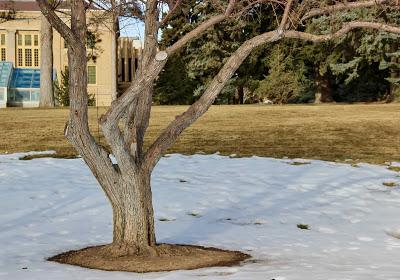
In the background is the Aven Nelson Building and the Williams Conservatory.

A place to rest during tree-following.

Since it’s January, these trees have only scattered shriveled dead leaves. But let’s use our imaginations to visit them in a different time—specifically June of 2006. There’s no snow, the grass is green, and the flowerbeds along the walkways are brilliant with color: green, red, purple, yellow. The deciduous trees are fully leafed out, and beneath each one are three or four people, clustered together. They look closely at branches and bark, examine any leaves and buds within reach, stare at something in their hands, and then chat among themselves. They repeat this behavior until smiles appear on their faces. They are identifying trees with dichotomous keys.
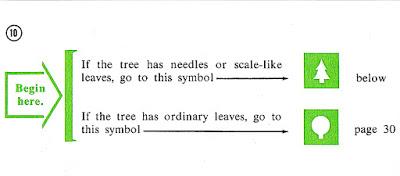
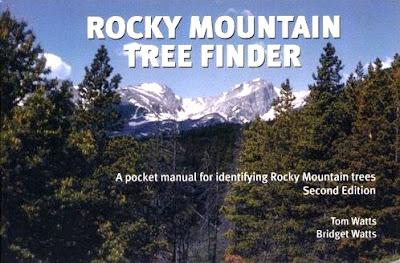
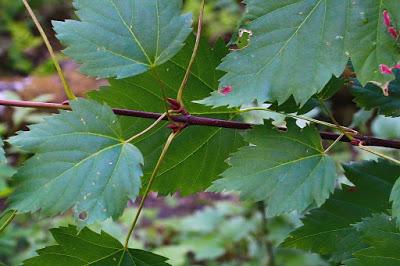
Opposite simple lobed leaves of Rocky Mountain Maple (courtesy TreeLib).
The groups shift from tree to tree, refining their skills. Then a most amazing thing happens. A University truck pulls up and parks close by. Two men get out, unload a small tree, and plant it! We stare in disbelief, then someone starts laughing and we all join in. “They brought us another tree to identify!”
The “surprise tree” 12.5 years later.
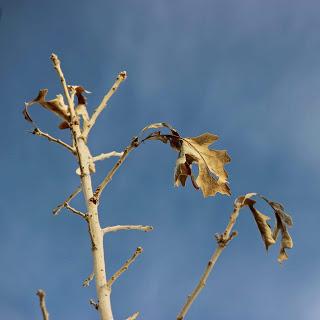
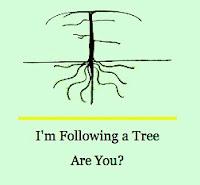
Note
(1) The Rocky Mountain Tree Finder is just one in a series of tree, flower, cactus and other plant finders.
